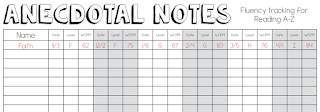Click the picture to download this FREEBIE!
As an educator, I'm always looking to develop best practices in my classroom to benefit my students. Our Common Core Standards for Mathematical Practice (MP5) require students to use appropriate tools strategically. "Mathematically proficient students consider the available tools when solving a mathematical problem. Proficient students are sufficiently familiar with tools appropriate for their grade or course to make sound decisions about when each of these tools might be helpful, recognizing both the insight to be gained and their limitations. They are able to use tools to explore and deepen their understanding of concepts."
Basically, students should be familiar with a variety of math tools and be able to choose one to effectively and efficiently solve a mathematical problem.
*Interactive Journal pages to introduce math tools.
*Ten frames are incredibly useful tools to help students develop
their number sense within to context of ten.
With this in mind I decided to develop a printable set of my favorite first grade math tools. It made sense to share this as a FREEBIE to compliment my Growing Bundle of Math Supplements a plethora of interactive journal pages, math games, activities, and assessments to cover all first grade math concepts and skills.
Check out all of my Math Supplements here!
*Hundred and 120 charts assist students in counting, skip counting, adding, subtracting,
rounding, place value and they begin to notice patterns within our number system.
*Place Value charts help students understand the value of each digit within a multi-digit number.
*Part-Part-Whole Mats help students add, subtract, and find number combinations.
This FREEBIE includes interactive journal pages to introduce math tools as well as a multitude of basic tools to help students begin constructing cognitive models for math concepts and processes. Math tools engage students and increase both interest and enjoyment of mathematics. Students who are presented with the opportunity to use math tools are more interested in math and that interest translates to increased mathematical ability!
Printable manipulatives help engage students and
encourages them to persevere in problem solving.
For many of the tools there are large mats for teacher modeling and math centers. There are also mini-tools perfect for individual student math tool bags! To manage materials, I print mini-sets of tools on a variety of colored copy paper so one student in a group has green, another has yellow, blue, and so on. I also print and laminate these math tools for durability and repeated use.
You may also want to add connecting cubes, base ten blocks, counters or two colored chips, dry erase markers or additional manupulatives to use with these tools.
What math tools do you use in your classroom?!?










































